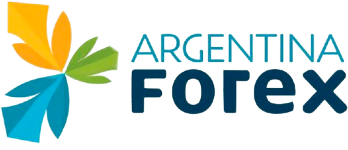
Why Investors Are Turning to Medical Implant Manufacturing
The medical-implant market is large, resilient, and less cyclical than many industrial sectors — which makes it attractive to investors focused on steady growth, margin expansion, and technological defensibility. Implants address essential medical needs (orthopedics, dental, cardiovascular) and benefit from secular tailwinds: longer lifespans, rising prevalence of degenerative disease, expanding elective and reconstructive procedures in middle-income markets, and the substitution of higher-value implantable solutions for older or less durable treatments.
Two headline reasons investors pay attention to the manufacturing side (not just device design):
- Manufacturing as moat: Precision processes such as investment casting create barriers around complex geometries, tight tolerances, and material certifications. Quality, repeatability, and certification are non-trivial — companies that deliver these reliably command pricing power and stickier customer relationships.
- Tech convergence: When investment casting is combined with 3D printing, advanced alloys and AI-driven process control, the manufacturing layer becomes a source of product differentiation and a platform for roll-ups or specialist service models.
Market context: the global investment casting market and the broader medical implant market are expanding — offering investors both direct play (foundries, hybrid workshops) and indirect play (materials suppliers, digital process vendors).
Rising Global Demand for Medical Implants
Demand drivers are familiar but powerful:
- Orthopedics: Joint replacements and spinal hardware remain volume leaders. As activity levels rise in older cohorts, revision and primary procedures both grow.
- Dental implants: Increasing acceptance (and affordability) in large populations is expanding addressable market size and frequency of interventions.
- Cardiovascular implants: Stents, valve components, and support hardware continue to adopt more advanced materials and precision manufacturing.
The combination of rising procedure volumes and technological upgrades (smaller, longer-lasting, custom implants) increases value per case — and therefore the revenue opportunity for precision manufacturers. Many market reports project healthy CAGR in the medical implants segment over the next decade, underpinned by demographic and technological factors.
Aging Populations and Healthcare Expansion
Demographics are the slow-burn macro driver: aging populations in developed markets increase incidence rates for osteoarthritis, cardiac disease, and tooth loss. At the same time, healthcare infrastructure expansion in emerging economies — a mixture of government initiatives, private clinics, and dental/orthopedic chains — expands procedure access. Together, these push both unit volumes and migration toward higher-value implants.
A point to note for investors: growth in procedure access can be non-linear. Examples include procurement reforms or price adjustments (e.g., volume procurement policies) that suddenly open new pools of patients, as has been observed in selective dental markets. Investors should watch regional reform catalysts because they can materially accelerate demand.
Market Growth Potential in Emerging Economies
Emerging markets offer a double benefit: younger populations catching up on previously unmet demand, and large patient pools that can generate rapid top-line expansion when payment schemes and procurement systems scale up. For investors, this creates an opportunity to position manufacturing capacity or service partnerships that are geographically optimized — low-cost, quality-certified foundries nearer to high-growth demand centers, or nimble partners who can meet local regulatory and procurement nuances.
The Role of Investment Casting in the Medical Implants Market
What Is Investment Casting and Why It Matters for Investors
Investment casting — often called lost-wax casting — is a process where a wax pattern is created, coated with a ceramic shell, the wax removed, and molten metal poured to create a highly detailed metal part. Because the process can reproduce complex internal geometries and fine surface finish with minimal machining, it’s especially suited for medical components where surface quality, internal channels, and tight tolerances matter.
From an investor’s perspective, the appeal is threefold:
- Precision at scale: Ability to produce complex geometries repeatably with less CNC machining (lower variable cost on some parts).
- Material breadth: Works with high-value, biocompatible alloys (titanium, cobalt-chromium, stainless steels), enabling premium products.
- Customization potential: Easily combined with digital pattern creation to support low-volume, patient-specific runs — an attractive niche for premium pricing.
Technical and commercial summaries of the process are broadly available and show how investment casting fits the implant value chain.
Competitive Advantages Over Other Manufacturing Methods
Below is a compact comparison investors can use in screening targets or partners.
| Feature | Investment Casting | CNC Machining | Powder Bed AM (Metal 3D Printing) | Forging |
| Complex geometry | Excellent | Limited | Excellent | Poor |
| Surface finish (post) | Smooth (low post-processing) | Good (depends) | Rough → needs finishing | Smooth for simple shapes |
| Material waste | Low | High | Low-medium | Low |
| Per-unit cost (small batches) | Competitive | High | High | High for complex shapes |
| Scalability | Good (patterns, automation) | Good | Improving | Good |
| Certification history in implants | Well established | Well established | Rapidly growing (regulatory hurdles) | Established for some implants |
This table is intentionally simplified — each device class and production volume profile changes the economics. The takeaway: investment casting sits in a sweet spot for complex metal implants where repeatable surface quality, certified materials, and moderate batch sizes are required.
Sources documenting investment casting’s fit for medical devices describe its material and surface-quality advantages.
Key Drivers of Adoption in the Medical Industry
- Biocompatible Alloy Capabilities: Investment casting works with titanium alloys, cobalt-chromium, and implant-grade stainless steels — the materials surgeons trust.
- Regulatory Traceability: Foundries capable of strict process control, documentation, and traceability can enable device makers to satisfy regulators (a critical barrier).
- Customization Needs: Patient-specific implants and small production runs favor processes that minimize tooling cost. Using 3D-printed patterns or molds combined with casting delivers both geometry freedom and metallurgical advantages.
- Cost & Time to Market: When pattern creation and shell handling are digitized, the lead time and cost per variant shrink — enabling iterative product design and faster regulatory submission cycles.
Market Trends Shaping Medical Investment Casting
Custom and Patient-Specific Implants Driving Innovation
Personalization is not just a buzzword: patient-matched implants (e.g., craniofacial plates, complex spinal cages) require geometries that standard mass-production methods struggle with. Investment casting, when coupled with rapid pattern production via resin/wax 3D printing, enables one-off or small-batch implants with the metallurgy and surface finish required.
This is the kind of niche where a foundry can command premium pricing: a medical device OEM may pay more for the precision, documentation, and speed required to get a patient-matched device approved and implanted within a surgeon’s treatment window. Case studies show academic groups and spin-outs using 3D-printed wax patterns to cast patient-specific parts as a validated approach.
Adoption of Advanced Alloys and Biocompatible Materials
The implant market’s push for longer-lasting, lighter, and more compatible implants is increasing demand for advanced metal systems and surface engineering — from titanium alloys and cobalt-chromium to shape-memory alloys (e.g., Nitinol) and next-gen coatings that improve osseointegration.
Shape-memory and smart alloys are a fast-growing materials segment in biomedical applications; market intelligence suggests robust CAGR for shape-memory alloys as they capture device makers’ attention for minimally invasive and adaptive implants. For investors, that means an upstream materials play (alloy producers, powder suppliers) and downstream opportunities (foundries that master processing of these demanding materials).
Automation, AI, and Digital Simulation in Manufacturing
Investment casting is being modernized. Digital twins, metallurgical simulation, AI process control, and automated shell handling reduce scrap, speed qualification, and improve yields. Foundries that deploy these technologies move from artisanal to industrialized, enabling predictable margins and faster qualification timelines — a huge plus for investors compressing time to revenue.
Scholarly and industry reports document hybrid factories that combine additive patterning with casting to lower lead times and costs while improving design freedom. These digital foundries are an attractive acquisition target because they combine process know-how with data assets that make quality reproducible.
Sustainability and Cost-Efficient Production Models
Sustainability matters: lower material waste, process energy, and lean manufacturing are increasingly demanded by buyers and procurement teams. Investment casting’s competitive material utilization (especially compared with subtractive machining) and the potential to recycle ceramic shells or reuse gating systems reduce total cost of ownership.
Investors should note that sustainability can be framed as both a cost-saver and a sales differentiator, particularly for hospital systems with procurement ESG mandates.
Applications of Investment Casting in Medical Implants
Orthopedic and Spinal Implants (High-Growth Segment)
Orthopedics and spinal hardware are the largest single applications for implants and a clear growth engine. Investment casting supports:
- Complex joint components and spacers.
- Spinal cages and structural hardware with internal lattice or channel features.
- Precision surgical instrument components used intraoperatively.
Because orthopedic implants often require fatigue resistance and precise mechanical behavior, foundries able to certify metallurgical properties at scale are strategically valuable.
Dental Implants and Prosthetics Market Expansion
Dental implants exemplify how improving affordability and distribution can unlock a massive patient base. Precision casting produces abutments, implant bodies, and prosthetic components where surface finish and fit are crucial. The dental market’s rapid growth (and regional procurement shifts) highlights where a casting specialist can capture volume — particularly when combined with local finishing and distribution.
An aside: when clinics advertise localized services, customers search phrases like aesthetic clinic near me — a reminder that downstream demand is not purely clinical, but also consumer-drawn. Integrators that can align foundry delivery with local clinic networks stand to benefit from throughput gains. (This is why supply-chain proximity and responsive small-batch capability matter.)
Cardiovascular Devices and Surgical Components
Cardiovascular devices demand high reliability and traceable metallurgy. Investment casting contributes to manufacturing valve components, housing parts, and some surgical tools. While some cardiovascular implants (e.g., stents) are dominated by other processes, many structural components still rely on cast or precision-machined castings.
Growth of Specialized Instruments for Implant Procedures
Surgical instruments that accompany implants — retractors, guides, fixation tools — present a recurring revenue stream and lower regulatory burden than implantable devices. Foundries with cleanroom finishing and passivation capabilities can capture this adjacent market, improving revenue diversification and de-risking an implant-heavy portfolio.
Key Advantages for Investors in Medical Investment Casting
High Margins Through Precision and Complexity
Specialist castings command premiums because complex geometries, tight finishes, and certification are services that are hard to commoditize quickly. Investors can expect higher gross margins compared with general-purpose metal workshops — provided the foundry has process controls, ISO certifications, and documented traceability.
Reduced Lead Times and Faster Market Entry
Digital patterning (3D-printed wax or resins) plus automated shell processes significantly reduce prototype-to-production lead times. Faster iteration means faster regulatory submissions and earlier market revenue — critical in the time-sensitive medical market.
Material Flexibility Supporting Innovation
Foundries that master multiple implant alloys (Ti-6Al-4V, cobalt-chrome, stainlesss) and advanced heat treatments offer device makers a one-stop shop — which creates cross-sell opportunities and larger contracts.
Scalable Production Meeting Growing Demand
Investment casting scales well from prototype batches to hundreds of thousands of parts with appropriate investments in automation and quality systems. This scalability is a core reason private equity and strategic investors are interested: the same facility can serve R&D, low-volume premium implants, and higher-volume commodity parts with modest reconfiguration.
Emerging Innovations Offering Investment Opportunities
3D Printing and Hybrid Manufacturing Integration
Hybrid factories are the present and near future: additive manufacturing to create patterns (wax or sacrificial materials) that feed into traditional casting allows the best of both worlds — rapid design iteration and metallurgical performance of castings. Foundries that invest in both technologies (or partner tightly with AM firms) reduce total time-to-part and broaden their addressable client base. Industry literature and case studies highlight how 3D printed patterns can reduce CAD-to-part lead time to days rather than weeks.
Next-Generation Smart Alloys and Materials
Smart materials (Nitinol, advanced SMAs, novel titanium alloys) are changing device design — enabling minimally invasive procedures and adaptive implants. Foundries that master the metallurgy and process windows for smart alloys (and can guarantee fatigue life and surface finish) will find a strong pull from OEMs designing next-gen devices. Market analyses show rapid growth in the shape-memory alloy segment, indicating increasing demand.
AI-Enhanced Casting Optimization
AI is being used to optimize gating, shell thickness, heat profiles, and process margins. Casting data, when structured and fed to models, lowers scrap and improves first-pass yield. For investors, AI capability is attractive because it transforms process knowledge into a defensible intangible asset — essentially turning operational excellence into a sellable competence.
Digital Supply Chains and Global Scalability
Supply chains that are integrated digitally — from the transfer of CAD files, scheduling of patterns for printing, traceable batch records and automated quality assurance — gives foundries the opportunity to scale across geographies, all while safeguarding their IP and regulatory compliance. Once a foundry can successfully supply certified implants to multiple regulatory markets, they become an attractive partnership or acquisition target for strategic device OEMs.
Risks and Considerations for Investors
Regulatory and Compliance Barriers (FDA, ISO)
Regulatory compliance plays a key role in market entry barriers. The U.S. FDA’s acceptance of ISO 13485, compounded by the revisions of Quality System Regulations, means that foundries and suppliers will either have to comply with an acknowledged QMS or potentially expend tremendous effort in documenting their structured processes and open themselves to audits. Non-compliance may not only present hurdles to accessing markets but also lead to expensive remediation. Investors should look to target companies with current QMS, appropriate cleanroom controls (if needed) and proven regulatory team resources.
High R&D Costs and Technology Adoption Cycles
Implementing new alloys, more complex AI tools or hybrid processes will require capital investment in equipment, metallurgist expertise, and validating testing. Returns on investment occur over multi-year time horizons. Therefore, as investors, it is advisable to conservatively model for lagged adoption in market penetration and budget for lengthy qualifications of targets.
Competitive Landscape and Market Consolidation
Market consolidation happens frequently; larger contract manufacturers or conglomerates may acquire specialist foundries to increase capabilities. Smaller foundries could face potent challenges to margins or fortuitously sell on growing demand in a market. Investors should remember that consolidation also creates both an exit path and risk of competition – therefore choose targets with clear market niches (Material or Process or Geography) or defensive IP.
How to Identify the Right Investment Opportunities
This section is a practical due-diligence checklist for traders, private equity professionals, and strategic investors.
Evaluating Foundry Capabilities and Certifications
- QMS and Certifications: ISO 13485, ISO 9001, and medical-grade certifications matter. Evidence of FDA audits or supplier status for Tier-1 OEMs is a major plus.
- Cleanroom and passivation capacity: For implantable parts, surface cleanliness and traceability are mandatory.
- Materials competence: Look for experience with implant alloys, heat treatment, and finishing processes.
- Digital capabilities: CAD file handling, additive patterning, MES systems, and batch traceability.
Partnering With Leading Manufacturers and Suppliers
Strategic partnerships reduce route-to-market risk. Investors should map a target’s customer list: recurring contracts with device OEMs (orthopedics/dental companies), supply agreements, and partnerships with materials suppliers reduce commercial risk and increase valuation multiples.
Key Metrics Investors Should Watch (ROI, Market Share, Patents)
Quantitative KPIs
- Revenue by product class (implantable vs. surgical instruments).
- Gross margin on implantable parts (reflects pricing power).
- Customer concentration (high concentration is a risk).
- R&D and capex as % of revenue (shows reinvestment rate).
- Order book / backlog duration (visibility into near-term revenue).
Qualitative KPIs
- Regulatory readiness: history of audits, recall incidents, corrective actions.
- Technological differentiation: proprietary processes, digital twin capabilities, AI optimization.
- IP position: patents around process, tooling, or coatings.
A typical investor model will stress test scenarios: slower regulatory approvals, loss of a top customer, or a successful modular expansion into adjacent product areas.
Final Thoughts: Future Outlook for Medical Implant Investment Casting
Investment casting is not the flashiest corner of medtech manufacturing, but it is foundational. It connects metallurgy, digital patterning, and process control — and in doing so, it supports higher-value, durable, and often life-critical devices. For investors, the opportunity is to identify foundries and partners that have:
- Regulatory hygiene — certifications and audit history.
- Material competence — mastery of implant alloys and heat treatment.
- Digital and hybrid capabilities — additive patterning plus casting automation to reduce lead times and improve margins.
- Commercial traction — repeat OEM customers or pipeline pilots demonstrating adoption.
Market projections indicate robust growth for both the investment casting market and the broader medical implants market, suggesting a long runway for well-positioned players. For traders and private-market investors, the playbook is clear: prioritize quality systems, proprietary process know-how, and digital capability — these are the features that turn a capable workshop into a scalable, defensible business.



